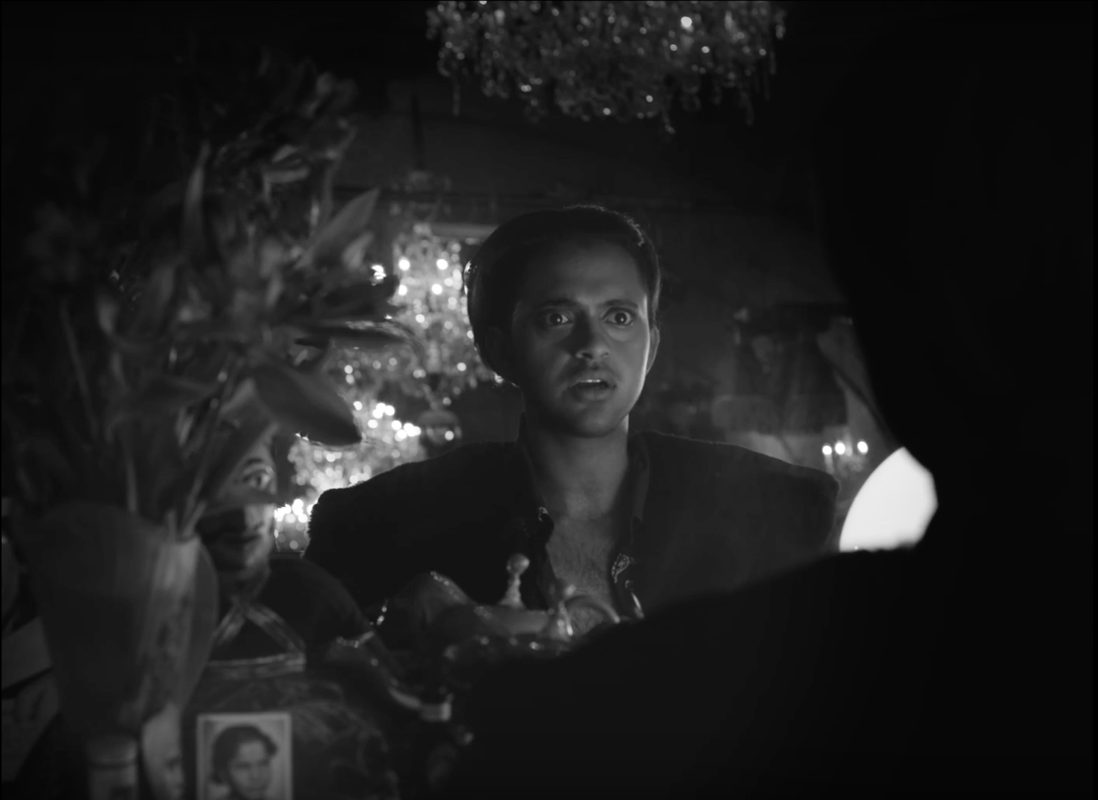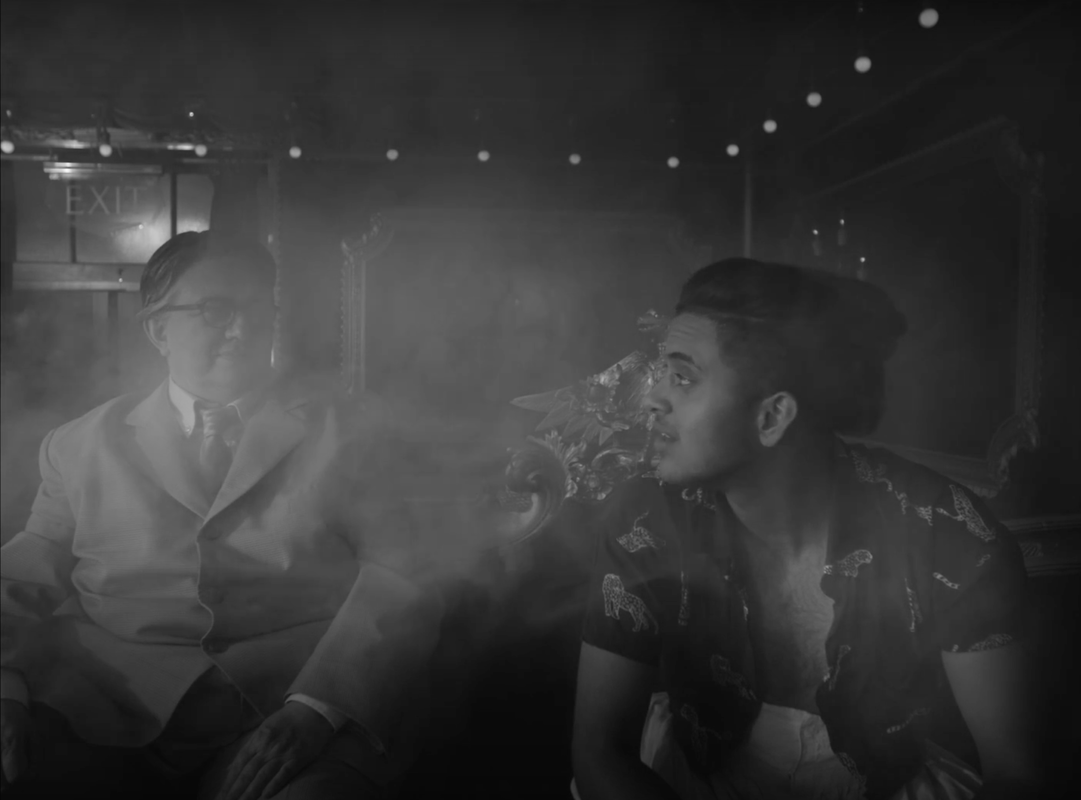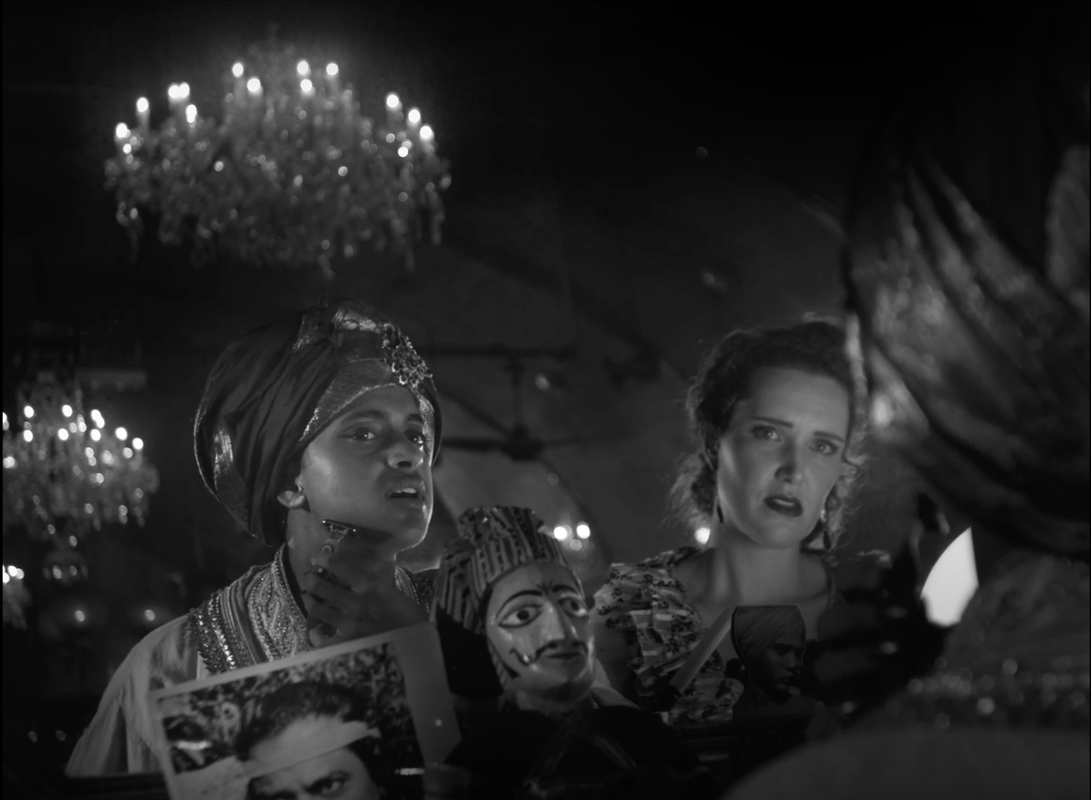The Dissolution Trilogy
2017
House of Women
Film by Michelle Williams Gamaker
Single-channel video installation
2017 | 16mm to HDV | Colour | Sound | English
In 1946, auditions were held for the character of the silent dancing girl Kanchi in Black Narcissus (1947), the upcoming film by venerated British directors Michael Powell and Emeric Pressburger. In a nationwide search close to 1000 hopefuls applied, with over 200 girls tested and interviewed. The coveted role finally went to seventeen-year-old Jean Simmons, who had recently won worldwide acclaim for her performance as Estella in David Lean’s Great Expectations. To fulfil the role, the white English actor had to wear dark Panstick make-up and a jewel in her nose to become the “exotic temptress” of Rumer Godden’s novel of the same name.
House of Women recasts the role, auditioning only Indian ex-pat or first-generation British Asian women and non-binary individuals living in London. Unlike in the original role, for House of Women the re-cast Kanchi of the 21st Century speaks. Shot on 16mm film, the four candidates, Jasdeep Kandola, Arunima Rajkumar, Tina Mander and Krishna Istha, introduce themselves to an anonymous reader (voiced by Kelly Hunter) and recite a personalised alphabet including references to the history of photography and gender politics.
Candidates are asked to read lines from a script while both seated and standing in order to experience the somewhat unnatural and staged conditions of the audition. And just as those auditioning for House of Women feel the glare of the studio lights, the space of the audition and the violence of the camera’s gaze are brought into question, while the film plays with the inherent voyeurism of the director – and by inference the viewer – in watching young hopefuls competing for a role.
Drawing on tension between construction and illusion, House of Women explores the gaps in representation and the spaces opened up by the “fiction machine” of the 1940s British studio system, which presented a very controlled colonial vision of the British Raj and its people, often replacing Indian actors with British actors.
The Fruit is There To Be Eaten
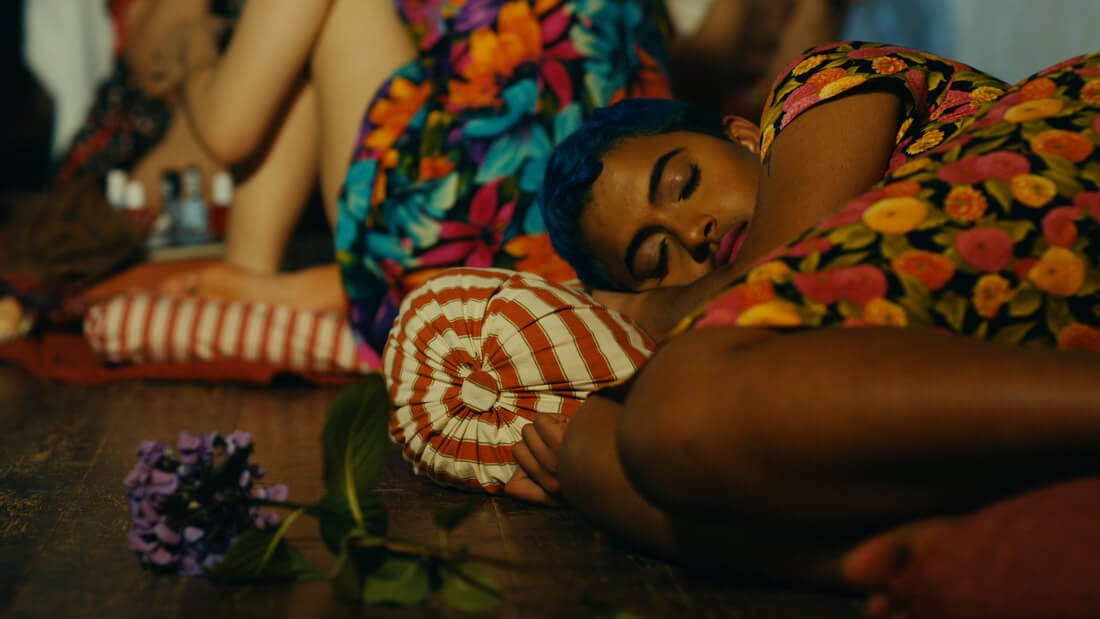
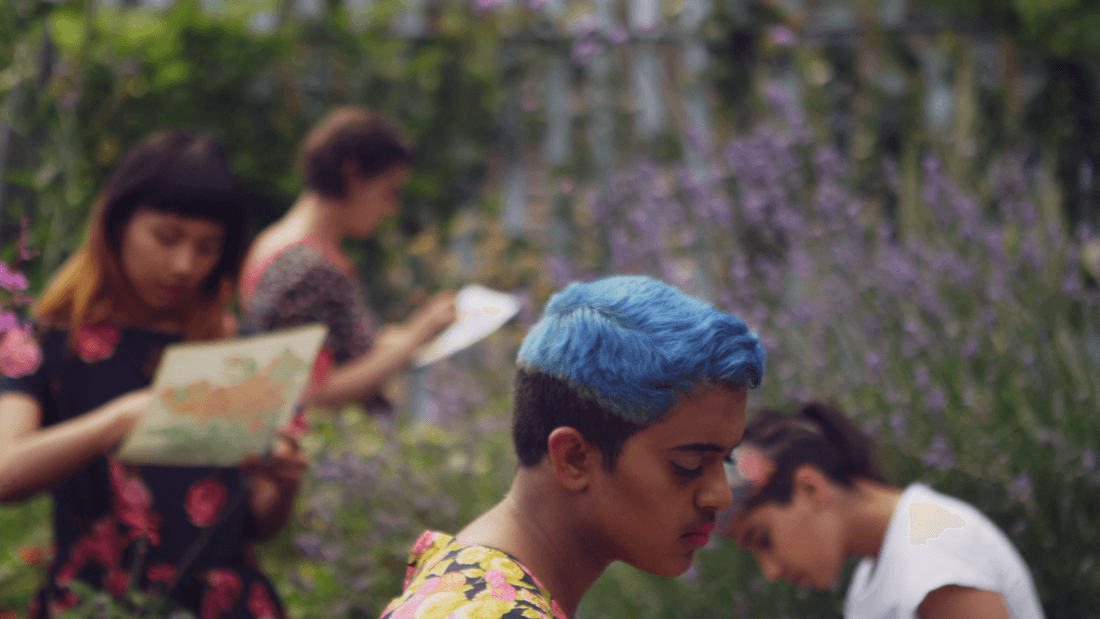
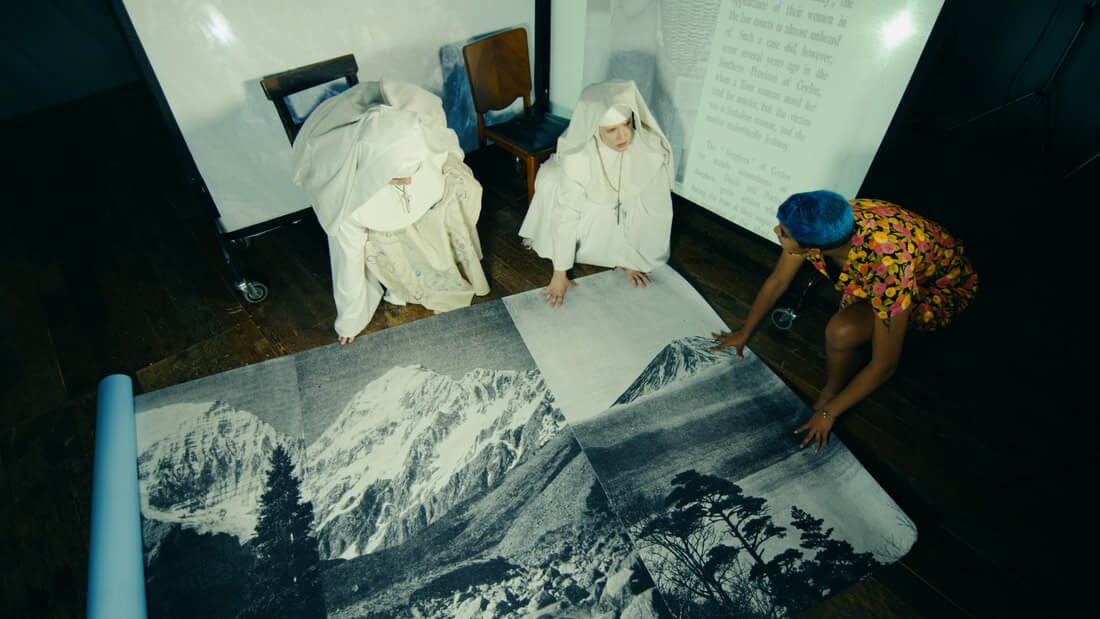
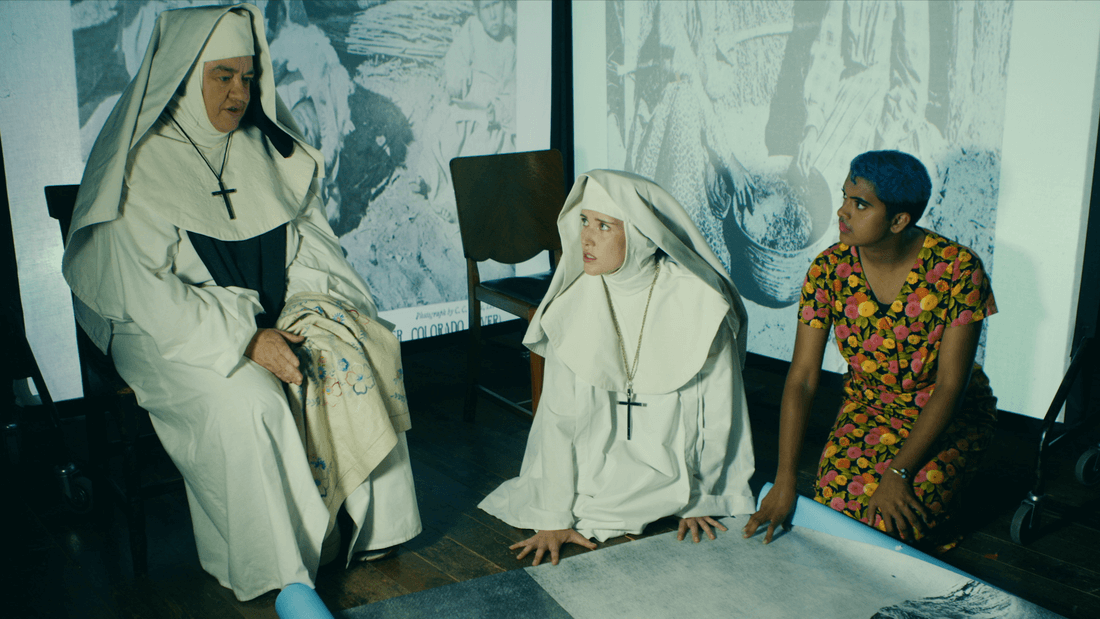
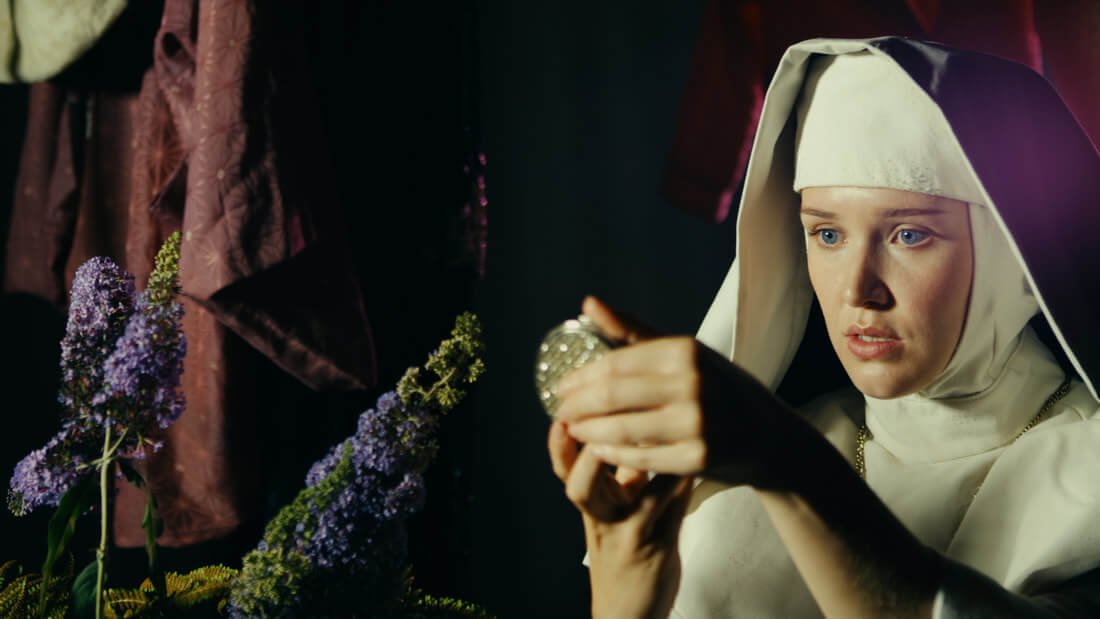
2017 | HDV | Colour | Sound | 24" | English
Single-channel video installation
The Fruit is There To Be Eaten is based on the 1947 film Black Narcissus, by British directors Michael Powell and Emeric Pressburger., set in India. The work echoes the style of the source material in that it is set in India, but replaces painted backdrops with back projection, stock footage and revealed sets to reimagine the relationship between lower-caste dancing girl Kanchi and missionary nun Sister Clodagh. In a schoolroom and in the gardens of a Himalayan convent, Kanchi and Clodagh recognise they are trapped in a film set in 2016. With the colonies a distant memory, Clodagh has lost her role as sister superior. This allows Kanchi to introduce her gods in order to challenge an imposed belief system, and in so doing to break down the civility of the colonies into something more carnal.
The Eternal Return
Film by Michelle Williams Gamaker
Single-channel video installation
2018 | HDV | Black-and-white | Sound | 20" | English
The Eternal Return explores the phenomenon of how a performer of colour such as international actor Sabu might be treated and thought of in a way analogous to the animals with whom he appears. In Sabu’s case this was the conflation of his background as mahout son’s with his career as actor that imposed a seemingly inescapable relationship with elephants: the animals recur throughout his filmography. It also highlights how, in spite of his extraordinary fame Sabu was always the sidekick and never the love interest. With the use of a combination of live-action dramatised recreation and British Pathé stock footage re-edited and altered with VFX, The Eternal Return revisits the now-struggling Sabu in 1951 as he supports his family by performing – once more with a troupe of elephants – in Tom Arnold’s Christmas Circus in Haringey Arena.



